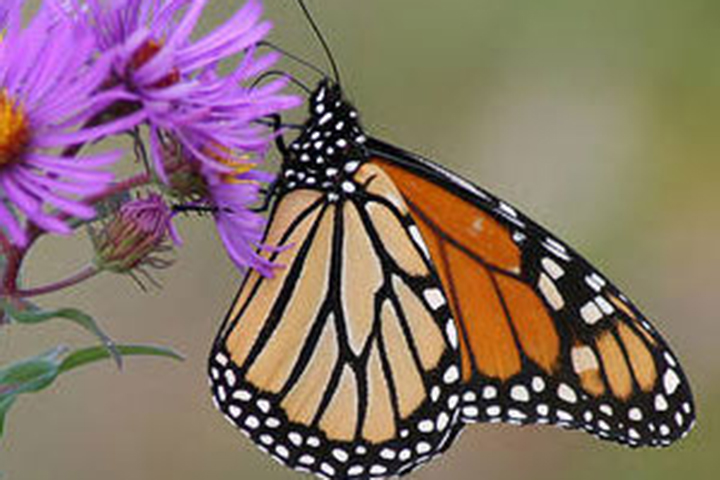Our top faculty experts answer questions from the Illinois State University community in the “Ask a Redbird Scholar” section.
Appears InI seem to have noticed more monarch butterflies recently than in years past. Is the population rebounding, or is it just my imagination?
—John Baur, associate vice president for Research and Graduate Studies
The answer is yes and no. You probably saw more monarch butterflies last summer because there has been a boost in their numbers for 2015–2016. But no, sadly, we cannot say they are rebounding from long-term declines.
In general, there has been a decline in the monarch numbers over the past 20 to 25 years. In North America, there are two main populations, both migratory—the western population migrating down to California and the eastern migrating to Mexico to overwinter. The eastern population has declined about 90 percent and the western 50 percent.
It’s the eastern monarch population that we see around the Midwest. The adults, who are not fully mature, go down and overwinter in protected forest areas in Mexico. Then they head up the thousands of miles through the United States, all the way up into southern Canada.
Unless we take part in active management and restoration of habitat, this is the best year you are going to get. Otherwise, we may not see the same numbers again, and in a few years, migrating monarchs could be no more.
This northern migration spans several generations. So the first generation each year is usually in Texas and Oklahoma, and they will hop up to Illinois around the second or third generation. Ultimately, they will make their way to southern Canada.
Monarch populations have always been faced with diseases and predators. The long-term downward population trend is due to a more recent, greater threat—loss of habitat in Mexico and in the United States. Down in Mexico, climate change and the warming of the overwinter sites is causing problems for their survival. And even though forest areas are protected, there is illegal logging that reduces habitat every year.
A large part of the problem in the United States is the loss of plants along the monarchs’ migration route.
When they are breeding in the U.S. in the summer, they need two types of plants. They need plants—various species of milkweed— that will provide them with nectar to give them the energy to be able to fly these long distance and they need plants where they can lay their eggs.
There has been a loss of wildflowers in general, but particularly the milkweed. Humans are mowing grasslands within an inch of their life, reducing natural habitat, and removing what some people call “weeds,” but are really a vital part of the ecosystem. Widespread herbicide use is the major threat to monarch habitat.
While monarchs are overwintering in Mexico, researchers can estimate how many millions of monarchs there might be based on counting the trees that are essentially dripping with monarch butterflies clustered for the winter.
The survey from the winter of 2015–2016 saw the population of monarchs go back up to 150 million, after lows of less than 50 million the prior three years. This is good, but the 150 million is still more than 70 percent lower than populations at the start of surveys in the 1990s. Populations fluctuate each year for various reasons, including weather, but the long-term trend is still downward.
Last year was the best weather possible for breeding monarchs, meaning optimum conditions with the monarchs maxing out the habitat they have now.
Unless we take part in active management and restoration of habitat, this is the best year you are going to get. Otherwise, we may not see the same numbers again, and in a few years, migrating monarchs could be no more.
Ben Sadd, assistant professor of infectious disease ecology, School of Biological Sciences
To submit a question for our “Ask a Redbird Scholar” section, email it to Kevin Bersett at kberse@IllinoisState.edu or tweet it to @ISUResearch. Chosen questions and answers appear in each issue of Illinois State’s new research magazine, the Redbird Scholar. To read other “Ask a Redbird Scholar” posts, visit IllinoisState.edu/RedbirdScholar.

